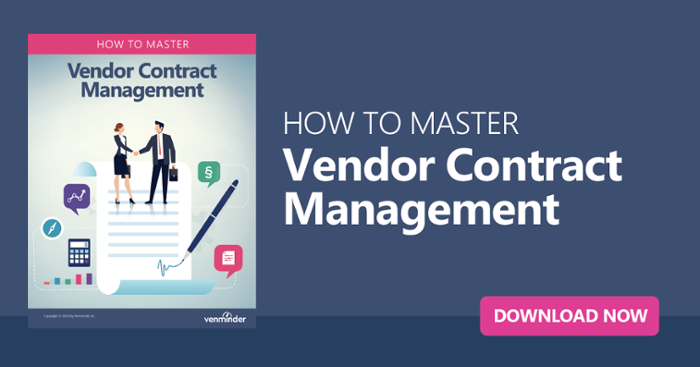Service level agreements (SLAs) are an important tool in measuring the quality of products or services your vendor provides. SLAs are generally set aside in a document that is separate from the contract (the formal agreement between you and your third-party vendor). While it’s important to remember that the contract and the SLA have different purposes, these two documents should tie together, by reference within each document or by being combined into one document. In fact, incorporating the SLA into your vendor contract is a best practice and the recommended approach to ensure your vendor is meeting your organization’s standards.
The bottom line is this: SLAs should be a key component of every contractual relationship with your third parties.
Why Are SLAs Important?
Including SLAs with your third-party vendor contracts helps set the stage from the onset of the relationship with that vendor and will help ensure that each party’s expectations are met. It can also provide your organization with some level of “peace of mind” (not to be confused with complacency). If established properly, the SLAs should help drive efficiency with your vendor because you both know exactly what is expected and how each are being held accountable.
Specifically, SLAs can be used to accomplish the following:
- Clarify expectations
- Bring focus to customer service
- Establish measurable standards
- Justify penalties for non-performance
Setting SLA Expectations
It’s common for the SLA guidelines to favor the vendor. If the vendor provides the same service to multiple clients, then their SLAs are often static and pre-established. Ideally, the SLAs will be tailored to the products and services the third-party vendor is providing to you. For this reason, it’s very important that you negotiate the terms of the agreement and the SLAs in the early stages of the contracting relationship with a new vendor or when renewing an existing contract.
Regardless of which scenario you are working on, establishing clear expectations of the service level should be stated right up front and should clearly define the following:
- Metrics:
- What is the standard level of service that is already in place?
- How is the standard level of service measured? How often is it measured? Does it accumulate or start fresh each period? Upon what period is it measured?
- Is there a business review period established that will allow you to review overall performance, including SLA performance?
- How is it calculated? Is a sample calculation provided?
- What reports are provided? Are they provided automatically?
- Is it possible to request service levels outside of those standards? If so, at what cost?
- What penalties are in place for missed SLAs?
Each of these questions should be addressed within the SLA. When doing that, make sure the SLA language is straightforward with little room for ambiguity so that both parties know what to expect. Furthermore, it’s important that the SLAs be realistic. A good partnership is built on two parties who understand each other’s expectations and capabilities and work together to deliver on those.
- Responsibilities:
- Who is the point of contact for both parties?
- What reporting is expected from the vendor to document SLA performance?
- Who is responsible for identifying and escalating SLA performance?
- Is there a specific time period or commitment associated with delivering SLA reporting, identifying missed SLAs, etc.?
If these specific details are not lined out in the SLA language, then no one knows who is responsible for delivering what. At that point, I dare say having the SLA in place will be very ineffective and much like no SLA exists!
Strategies to Incorporate SLAs Into Contracts
This may sound overly simplified, but the surest of strategies is to require the vendor to provide SLAs in their proposed contract language. You might encounter a vendor who does not have any pre-established SLAs and is starting with a blank sheet of paper. Take that opportunity to work with that vendor to help write the SLAs – you know better than anyone your expectations! And, at the end of the day, the relationship you’ve built should be the fuel needed for a long, successful relationship.
Using SLAs to Terminate the Contract
Repeated SLA failures may result in penalties or termination of the contract. Be sure to include the specifics of when and why a termination can occur.
Questions to address:
- Which areas of the SLA are under the highest level of scrutiny? (i.e., quality, downtime, frequency, etc.)
- What is the maximum number of penalties or remediation attempts before contract termination?
- What are the financial responsibilities of each party in the event of a termination?
The service level agreement and contract are both essential documents to monitor throughout the vendor lifecycle. A well negotiated SLA is an invaluable tool that can support the vendor contract and protect your organization, should you need to terminate the contract altogether.
And, as they say… it takes two to tango! It also takes two to create a successful relationship, whether that’s with a client or a third-party vendor. So, if you want an effective SLA, be sure to work with your vendor and, hopefully, they’re willing to work with you. If they aren’t, then maybe they aren’t the vendor for you.
Tracking your SLAs is important, but do you know what to include in them and what to do if one is broken? Download the eBook.






.gif?width=1920&name=Sample-Graphic-Animation%20(1).gif)



